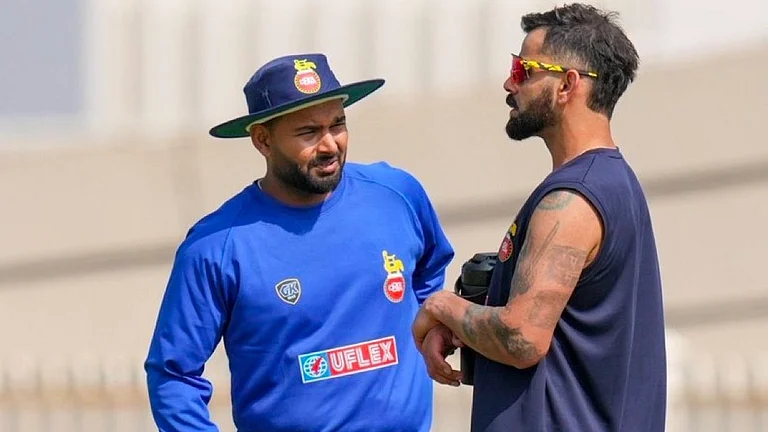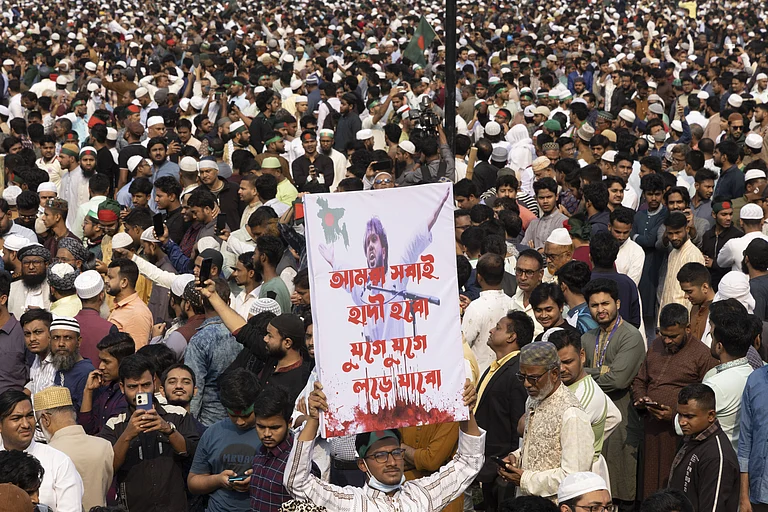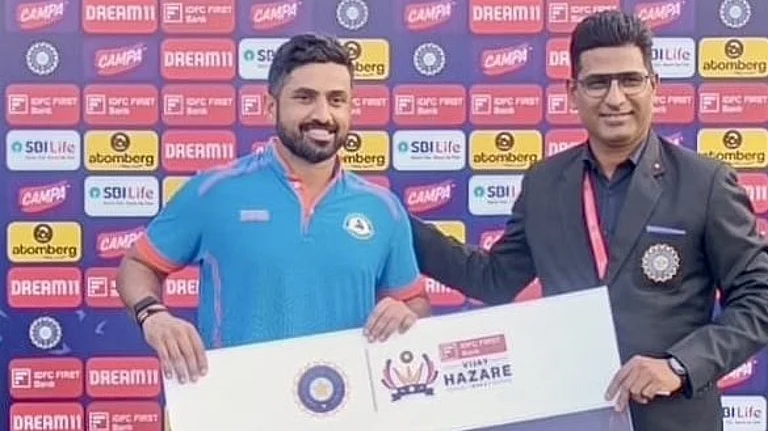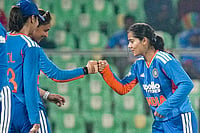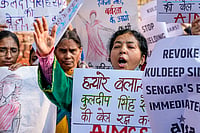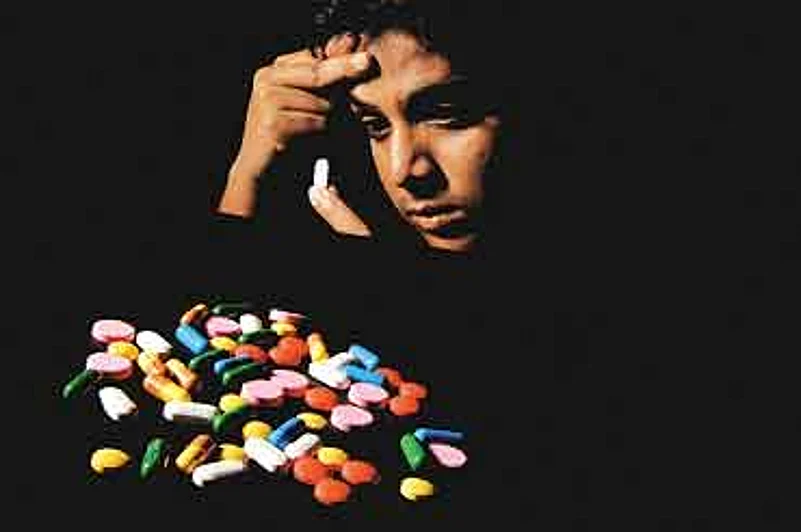
What makes us such willing pill-swallowers? Dr Wishvas Rane, Pune-based health activist asserts: "Most viral conditions are self-limiting, 80 per cent get cured on their own, this pill-popping attitude is nurtured by pharmaceutical firms." This is particularly true in our unique pharma-sales culture where pills are available without bills and bills can be obtained without buying pills. Dr Ashish Sabherwal, joint secretary, Indian Medical Association in Delhi, points out: "Patients just want momentary relief and aren't willing to get to the root of the problem, so pills are eaten like peanuts."
Highly profitable OTC drugs can also be advertised legally, leading to even greater abuse. Experts believe that as pharma-majors shift from prescription to OTC mode, pill-popping has shot up.Estimates of Television Audience Metre in India show that OTC brands have increased their adspend by 47.9 per cent between January-June 2003 and the same period in 2004.Though the TV adspend fell marginally this year, it was more than made up by the spurt in the print media.The most advertised allopathic drugs are cold and cough remedies, antacids and painkillers.
Another reason for spiralling self-treatment is that general practitioners or GPs, docs who shone the torch down our throats from our toothless babyhood to our ailing adulthood, are gradually vanishing. Statistics reveal that in 1980, the medical community comprised 80 per cent GPs and 20 per cent specialists. Today, that figure is 60 per cent specialists to 40 per cent GPs. "Most doctors believe that anMBBS has no market value and then we have so many super-speciality hospitals, but only a GP can make a depth of difference," asserts Dr Dave. Consider also this skewed medical distribution. The overall figure for India is 1 doctor for 2,200 persons; in over-doctored Delhi that figure shoots up to 1 doctor-650 residents.
In real life, we patients have lost a family friend and philosopher—our GP who knew us by blood group, allergies, medical history and emotional upheavals. Hesitant about dashing off to an intimidating ent specialist when we have throat trouble, we just check with the chemist. That could be a dose for disaster. Right now, our government has refused to ban OTC cough, cold and flu drugs containing phenylpropanolamine, or PPA. According to recent medical studies, PPA can cause a haemorrhagic stroke.
Says Dr C.M. Gulhati, editor of Monthly Index of Medical Specialities (MIMS), India's most widely read medical journal: "Though banned since 2000 in the US and subsequently in all other developed countries, medicines with PPA are allowed to be sold freely in our country. By letting people buy potentially hazardous drugs the Indian government is committing murder twice." Waving another red flag, Gulhati says that so far no drug has been banned in India, based on domestic market surveillance in our entire pharma history.
A few months ago, the Film Censor Board together with health minister Anbumani Ramadoss instituted a ban against actors smoking in movies (not citizens who light up in real life). Yet the same health minister has not passed laws, leave alone guidelines about drug advertising. Just last year, a prescription drug, Diclowin Plus, made by Delhi's Wings Pharmaceuticals was being advertised until the media outcry forced the Indian Medical Association to take up the issue. They protested before the Drugs Controller General of India that advertising a prescription-only medicine was illegal. It was also misleading people to believe Diclowin was safe for headache relief, while hiding serious side-effects. Earlier this year, Ranbaxy's TV spot for Revital, a nutritional supplement, was withdrawn for being covertly promoted as a sex tonic.
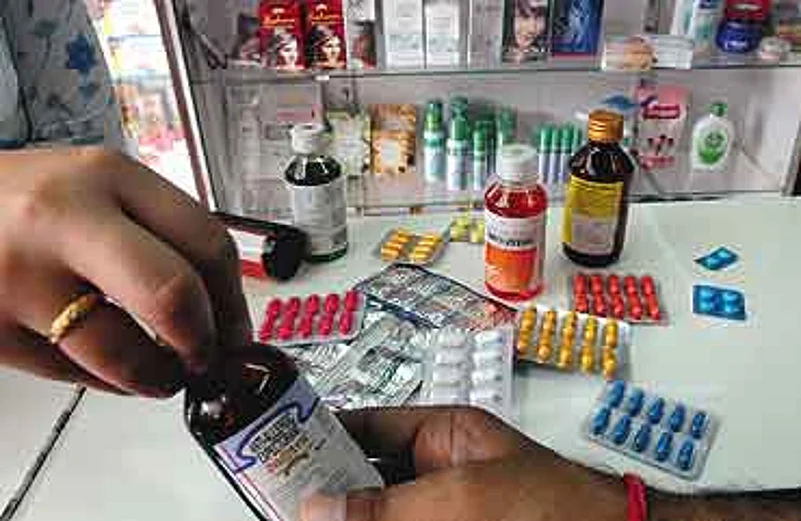
Unfortunately the medical community views us as customers or profitable opportunities, rather than patients. "As India's economy and literacy rate improve, self-medication will increase, we expect the OTC segment to grow at 15-20 per cent per year," predicts Ranjit Shahani, MD, Novartis India. He is also president of a multinational drug lobby, the Organisation of Pharmaceutical Producers of India or OPPI.
This June in Delhi, OPPI held a seminar on Responsible Self-Medication: The Need of the Hour. Here chairman Bharat Patel pointed out that India's OTC market is currently very underdeveloped, only Rs 3,000 crore, as compared to the US's Rs 75,000 crore. To improve this, he suggested a change of drug rules to extend OTC availability in rural areas. Who will 'action this plan'? India's 135,000 post offices in towns, tehsils and villages.OPPI hopes the government will instruct the post office to offer this 'empowering service' by Dec 2005.
This proposal to club postcards with drugs makes Dr Gulhati fly off his chair inrage. He alleges pharma-majors only want to expand their customer base."Given the literacy rates in our country, imagine the plight of the poor, who don't know the side-effects of common medicines like antacids and cough syrups," hesays.Even in cities, experts say people confuse between Dispirin and aspirin.
Taking more drugs into our hands might soon become easier. OPPI is also lobbying with the government to increase OTC drugs from less than half a dozen to 250. Even when we have no regulation on brand names. Right now Lona is both a low sodium salt and an anti-epilepsy drug. Incidal, a familiar anti-allergy with mebhydrolin to be taken 3-4 times daily, has been replaced by Incid'l with cetirizine to be taken once daily. Imagine reading the fine print—change of name, dosage and content—when your eyes are red and watering. Or, imagine a villager trying to spot the difference at his local post office where he uses his thumbprint to open an account.
Or try this arithmetic. One brand of a cetirizine-based antihistamine is sold to chemists for Rs 3. They sell the same formulation to us for Rs 26. That's a lucky-by-8-times-profit and a lucrative incentive to chemists to sell as many pills as possible. Competition spurs many such margins. With 100 brands of calcium on sale right now, medical representatives are desperately grabbing doc-and-patient wallets to meet demanding sales targets.
There seems to be no easy way to wellness. Experts warn that alternative medicine isn't safe either. Canada wants to ban ayurvedic medicines since they contain heavy metals such as arsenic, lead and mercury. In India, a Supreme Court ruling disallows allopathic doctors from prescribing ayurvedic medicines. Herbal formulations have side-effects and their interaction with modern medicines remains hopelessly understudied.
Such dangerous trends, and the fact that most doctors over-prescribe drugs, makes experts worry that we're hurtling towards drug resistance. Dr Gulati says he's seen patients popping erythromycin for the smallest infection and then becoming drug-resistant. Today once wonderful anti-bacterials such as ciprofloxacin, norfloxacin and related medicines have become less effective, because of inappropriate and indiscriminate use.
How can we stop being pillsters? First by accepting our frailties and by acknowledging that falling ill is part of a healthy life. Vijaya Venkat, who has lived without medicines for the last 22 years, says: "Absence of disease is not health, absence of health is disease." So rather than popping a pill, try feeding your cold. If you are browsing, visit a reputed and independent medical site and beware of covert commercial sites. Or even better, just take rest. Sick leave is still part of our employee agreements. And if you're not feeling better, check with a doctor. Don't be a pill popper, under the sugary coating—those are toxic drugs that are sliding down your throat.







